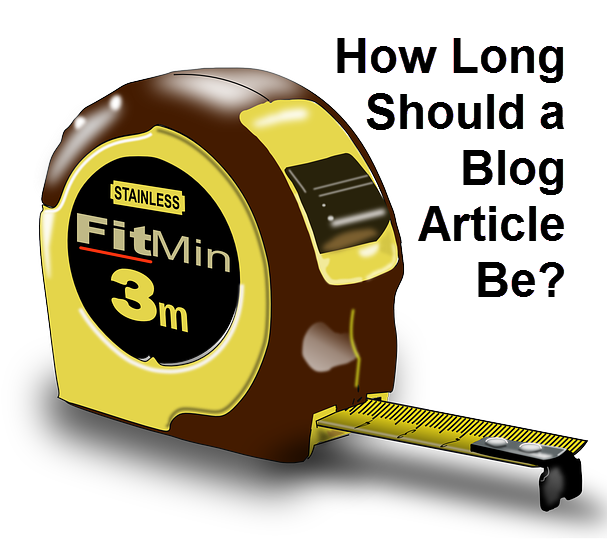
How long should a conversation be?
How long should a joke be?
What length of time does it take to tell a story?
Are you making a case, instructing or sharing a list that is the best on the planet?
Screens are more difficult.
The rules are broken daily because a reading and learning from a computer screen is much different than paper.
Neuroscience, in fact, has revealed that humans use different parts of the brain when reading from a piece of paper or from a screen. So the more you read on screens, the more your mind shifts towards "non-linear" reading — a practice that involves things like skimming a screen or having your eyes dart around a web page. - PRI.org
Seth Godin will blog a couple of sentences to share a thought. Richard Gabel or John Jantsch will give you the kitchen sink and then some to challenge thoughts and fill your bucket.
The reader does not realize their subconscious preference: "I read less and read slower on a computer screen. To keep me interested and happy, make me SMink=Smile and think at the same time ™. Reading a screen is not the same as reading paper."
It is not the fault or choice of the reader who is reading your blog content.
Evidence from laboratory experiments, polls and consumer reports indicates that modern screens and e-readers fail to adequately recreate certain tactile experiences of reading on paper that many people miss and, more importantly, prevent people from navigating long texts in an intuitive and satisfying way. In turn, such navigational difficulties may subtly inhibit reading comprehension. - Scientific American
The rules are changing as we speak. Small screens on mobile devices compete with 47 inch screens and as they become a preference over paper, studies prove people will not remember information as well.
Compared with paper, screens may also drain more of our mental resources while we are reading and make it a little harder to remember what we read when we are done. - Scientific American
Regardless of the difficulty, "they" say, longer is better for ranking in search.
Google values quality long form content that is relevant and backed by enough research and so it wouldn't be wrong to say that the chances of long form content ranking on the top of the search result are pretty high when compared to short form content.
Content Length and Its 10 Factors Affecting SEO [Infographic]
by the team at Capsicum Mediaworks, LLP
More comprehensive content that is well written and genuinely helpful should keep readers on site. Offering multiple pages in a guide should also lead to more page views as they are less likely to 'bounce'.
A study conducted by Moz shows a direct correlation between the length of the content and the number of backlinks pointing to it. It’s further evidence that long-form content is great for SEO.
The famous advertiser David Ogilvy once said:
All my experience says that for a great many products, long copy sells more than short… Advertisements with long copy convey the impression that you have something important to say, whether people read the copy or not.”
Average blog article length seems to lose.
According to Kevin Delaney, the editor-in-chief of business news site Quartz, articles that range between 500 and 800 words are least likely to be successful. As a result, he’s encouraged either short form or long-form content — but nothing in between. - Search Engine Land
The best length
There is no hard and fast rule or number for how long a blog article should be. There are studies that show how creating middle of the road average length blog articles are not impressive. This may not be a symptom of length as much as the quality as writers are hired to create average content without a passion for excellence.
Pay close attention to the reader. Consider their background, education, income, age and goals. Listen well to their wants, needs and passions. No one will know YOUR customers as well as you do. You will then make your own rules and use blog articles to make an impact and change lives.
How long should a blog article be?
This long. Because I have made my point.
